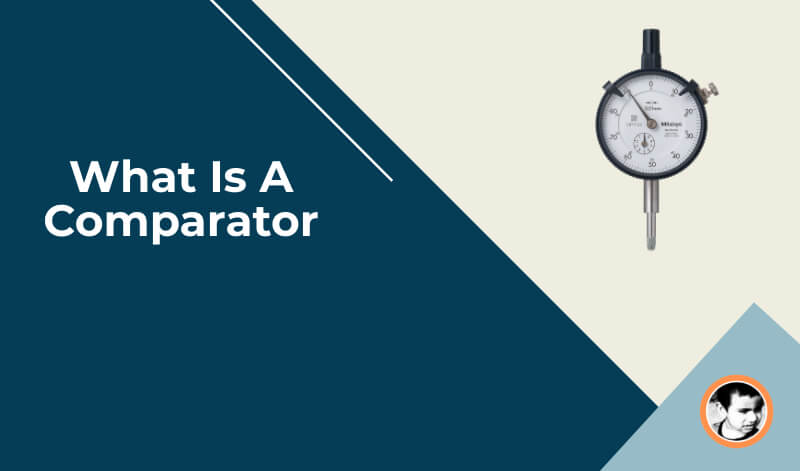Did you notice that you can NOT start your car without keeping the gear in neutral and pressing the brake? Why it is so? It so protects you from accidentally starting and moving your car. That’s Poka Yoke, A mistake proofing logic to help you not doing any mistake. Let’s learn more about Poka Yoke, Poka Yoke Definition, meaning, and some Poka yoke examples in this article.
Poka Yoke Definition: Poka Yoke Meaning
Poka Yoke is a Japanese term which means ” Mistake Proofing“. It is a mechanism in the process to avoid ( Yokeru) mistakes ( Poka).
Mistakes are unavoidable in a process. But what we can do is to reduce the chance of doing mistakes. If there are fewer opportunities to do a mistake, there will be fewer mistakes.
Poka-Yoke triggers a modified process flow or a new process flow so that there are fewer chances of doing mistakes. Following this, a product will have fewer defects as there is less chance of doing a mistake.
![What is Poka Yoke: Definition, Meaning with Examples [PDF] 1 poka yoke definition](https://www.riansclub.com/wp-content/uploads/2020/04/imageedit_1_2217640580.png)
History Of Poka Yoke
The concept of Poka-Yoke was initiated by Shigeo Shingo in 1960 as a part of the Toyota Production System in Japan. We all know that ” Necessity is the mother of invention“. The same is true with Poka-Yoke.
Below is one story of a real incidents which gave birth to Poka Yoke
That time in the production line of Toyota, There was a switch, under which the operator has to put two springs. Often, the operator forgets to assemble one spring. Unfortunately, since the spring was assembled under the switch, the issue was very difficult to diagnose which lead to switch rejection.
What Shigeo Shingo did is that he introduced a new placeholder in the production line where the operator has to keep the two springs first, and then the operator needs to assemble those springs. Since those two springs were placed in a placeholder, so the operator never forgets to assemble both the screw. With this, they could able to reduce defects. Though this whole concept looks very simple, this solution helped Toyota to save millions of switches getting rejected.
With this, you might have understood that the concept of Poka-Yoke is very simple and straightforward, It just reduces the chance of doing the mistake and that yields in fewer defects.
Why Poka Yoke is needed: Benefits of Poka yoke
To understand why Poka-Yoke is needed, we need to understand what implication a defective part can have on the consumer/ supplier/ distributor or any end-user. No one likes defective parts. Right? The defective part is a waste in a production system. Below are a few severe impacts of having a defective part.
- High rate of rejection
- Functional failure of a product
- Increased rate of service calls
- More product recalls
- Regulatory disapproval
- Blacklisting by product safety agencies
- High risk to end-user
- Loss of market share
- Bankruptcy of business
Now that we know that a defective part or product has too much impact, let’s understand how Poka-Yoke can help on those matters especially in the production line.
- Reduce part rejection
- Less chance of product failure
- Less quality inspection cost
- Improved product safety
- Improved production flexibility
- No risk of disapproval from regulatory and safety agencies
- Better customer satisfaction
- Better market share
Principles of Poka Yoke
Poka Yoke works on two broad principles.
- Prevention of the occurrence of human error
- Detection of error after the occurrence of human error
Now this broad principles are further decided into multiple pricicples as shown below.
Principle of occurance of human error has couple of sub principles.
- Elimination
- Prevention
- Replacement
- Facilitation
The detection principle also has few sub principles.
- Detection
- Mitigation
Elimination
Elimination works on the methodology to eliminate any process that might cause human error. It can be done either by redesigning the product or process workflow.
Prevention
When an error-prone process can not be eliminated or redesigning the product is too costly than the error itself, then prevention is the only solution. Prevention makes the process so robust that there will be no chance of any human error.
Replacement
When both elimination or prevention does not work, a more reliable process get introduced to replace the existing process. That when the Poka-Yoke for replacement comes into the picture.
Facilitation
Faciliation encourage to have a better and simplified process flow so that there is less chance of an error.
Detection
When already an error has occurred, it is always better to stop it as soon as possible. Detection in Poka yoke works on that principle.
Mitigation
When it is impossible to detect and stop the error, the next best solution is to mitigate the risk by reducing the number of error.
Approach Of Poka Yoke
Typically there are mainly two approach of Poka Yoke system that industries use.
- Warning Poka-Yoke approach
- Control Poka-Yoke approach
Warning Poka Yoke
Warning Poka Yoke alerts operator that an error is about to happen so that they can take action.
Control Poka Yoke
In control Poka-yoke, a device or process is implemented so that the error can be stopped from happening even if the operator ignores the warning.
Types of Poka Yoke
There are mainly three types of Poka yoke.
- Contact method Poka yoke
- Fixed value Poka yoke
- Motion step Poka yoke
![What is Poka Yoke: Definition, Meaning with Examples [PDF] 2 poka yoke examples](https://www.riansclub.com/wp-content/uploads/2020/04/imageedit_3_6166938559.png)
Contact Method Poka yoke
Contact method Poka-yoke detects the defects of a part by measuring its physical characteristics like length, height, volume, etc. Since the Poka-yoke mechanism comes in direct contact with the part, hence it is called the contact method.
Fixed value Poka yoke
If any operation needs to be performed multiple times then a Poka-yoke device is installed to make sure that the operation is performed for that many times. Since it counts the number of repeated operations, hence it is called the fixed value method.
Motion step Poka yoke
Motion step Poka-yoke checks if an operator has performed all the required functions or not. It ensures that the operator does not miss any step or does not do a step that is not required.
How to implement Poka yoke
To implement Poka yoke you need to consider following steps.
- Identify the defects
- Identify the source of defects
- Create a Poka yoke device or process
- Maintain the Poka yoke
Identifying the defects and the source of defects is very essential to implement Poka yoke. Once the source of defects are found, all stakeholder should sit and discuss on a potential poke yoke method to stop the defect. Once a Poka yoke device or method is implemented, there should be a dedicated team to monitor the effectiveness of Poka yoke.
Creating a Poka yoke is different for different defects. Some company uses their standard method to find a defect and implement a poke yoke. Although the Poka yoke philosophy is the same the implementation methods are different from company to company.
Example of Poka yoke
Below are couple of Poka yoke example though which you can relate the Poka yoke philosophy in day to day life.
1. Press brake and put gear in neutral to start a car
This is a perfect example of Poka yoke. The system protects the driver from doing the mistake of moving the car accidentally. If the Poka Yoke was not implemented, there could have been numerous errors by drivers
2. Mobile phone charging stops when it is fully charged.
We all know that even if you keep your mobile phone in charge, it does not overheat and does not catch fire. This is due to the mistake-proofing mechanism kept in place to break the circuit when the phone is 100% charged.
3. Different size fuel nozzle for different fuel
Did you notice you can’t put a diesel fuel nozzle in a petrol car fuel tank? This is because the nozzle diameter is different for petrol and Diesel fuel injectors. This is saving the driver’s from injecting wrong type of fuel.
4. Washing machines shuts down when the lid is open
You might have noticed that if you open a washing machine lid, the machine stops automatically. This is to protect people from getting hurt and leverage the risk of water spillage.
5. Circuit breaker
Circuit breaker break the circuit when there is over-voltage and there is a chance of fire. The circuit breaker automatically breaks the connection to save you.
Disadvantages of using Poka yoke
Although there is no such disadvantages of using Poka yoke but it affects the initial part or process setup cost. Since Poka yoke introduces a new processor device in the system, so it adds up the initial setup cost.
Also since Poka yoke uses additional control method to detect defects, it increases the cycle time of manufacturing. A dedicated expert team is also required to implement and maintain Poka yoke, which is again an additional cost and use if resource.
Conclusion
Though implementing Poka yoke increases initial setup cost, but ultimately it saves a lot of money by reducing defects. It helps to make great products which ultimately increases customer satisfaction and confidence.
Poka yoke is a science as well as an art. When implemented properly and efficiently, it can give you the best outcome. Though I listed just a few Poka Yoke examples, there are hundreds of such examples you may find in your day-to-day life.
That’s all I have in this article. It’s next to impossible to cover such a huge and critical subject with only one article. But I just tried to cover as much as I can so that you At least get the basics.
If you do have any questions or want to know more about Poka Yoke, please do let me know in the comment section and I will be happy to respond to all your questions.
Frequently Asked Questions ( FAQ’s)
Poka Yoke is a mistake proofing methodology that reduce the chances or opportunities of doing any mistake.
Yes, Poke Yoke philosophy is used widely used in product design. In fact, now a days its a must to implement poka yoke in product design
No, Poka yoke can be used in service industry, software development industry or any industry where there is a chance of doing mistakes
Yes, when you implement Poka Yoke, there is an initial set up cost. But in the long run it saves lot of money for companies by reducing defects.



